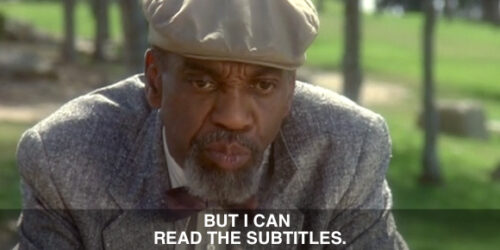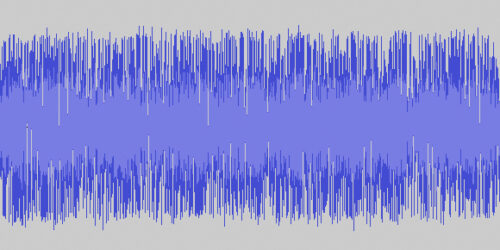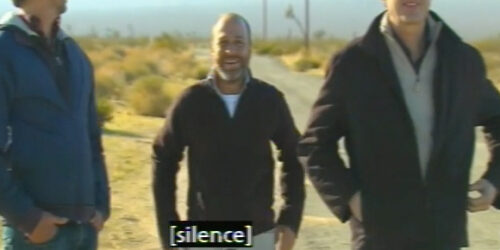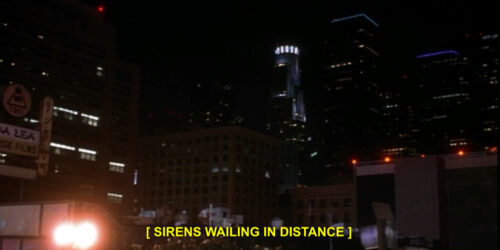Dialogue that wasn’t intended to be read
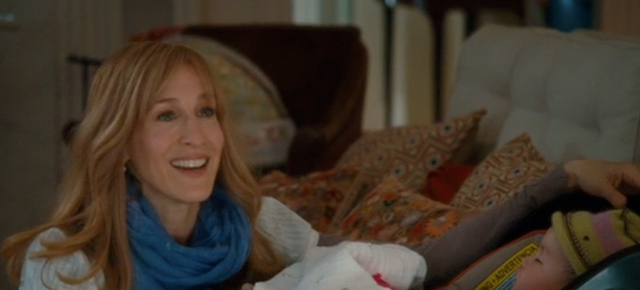
Speakers don’t need to spell things out for caption viewers when these viewers can read it for themselves at the bottom of the screen. Speakers only need to spell it out for those audio-only viewers who don’t have the added benefit of reading.
Closed captioning viewers will recognize the example below right away as an instance of a larger class. The larger class might be defined as “dialogue intended to be spoken and not read.” When such dialogue is read (by caption viewers), it loses some or all of its intended effect. Speakers don’t need to spell things out for us when we can read it for ourselves at the bottom of the screen. Speakers only need to spell it out for those audio-only viewers who don’t have the added benefit of reading.
In the following example from the very end of Did you Hear About the Morgans (2009), Sarah Jessica Parker comes up with a name for their new child — Rae — that audio-only viewers are likely to mistake for the town in Wyoming (spelled Ray) where most of the preceding action in the movie has taken place. That’s because Ray and Rae sound alike. SJP knows that Hugh Grant is likely to be thinking “Ray,” not “Rae,” so she spells it out for him. But caption viewers are way ahead of HG and everyone else because they’ve seen Rae spelled on the screen. By the time SJP spells it out as R-A-E for HG and the audience of audio-only viewers, caption viewers have seen Rae spelled two times already.
This dialogue really only works for an audio-only audience. It was written with them in mind. The default viewer is hearing. A screenwriter who had captions in mind would never have crafted dialogue like this. When this dialogue is captioned, the need to repeat Rae multiple times is no longer necessary. Enough already, I want to yell at the screen. I get it. Rae, not Ray. Clever. But it’s overkill to repeat it when we can read it.
There are other examples in this class. They depend on audio wordplay (homonyms, puns) that is received differently by caption viewers who are reading.
[Fair use notice: The videos on this site are transformative works used in good faith, in keeping with Section 107 of U.S. copyright law, and as such constitute fair use of copyrighted material. Read this site’s full fair use notice.]

